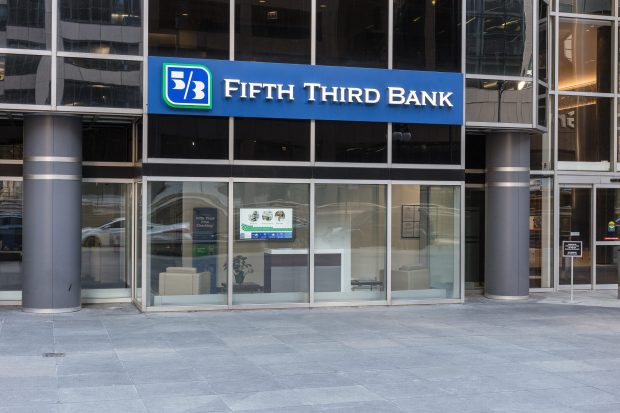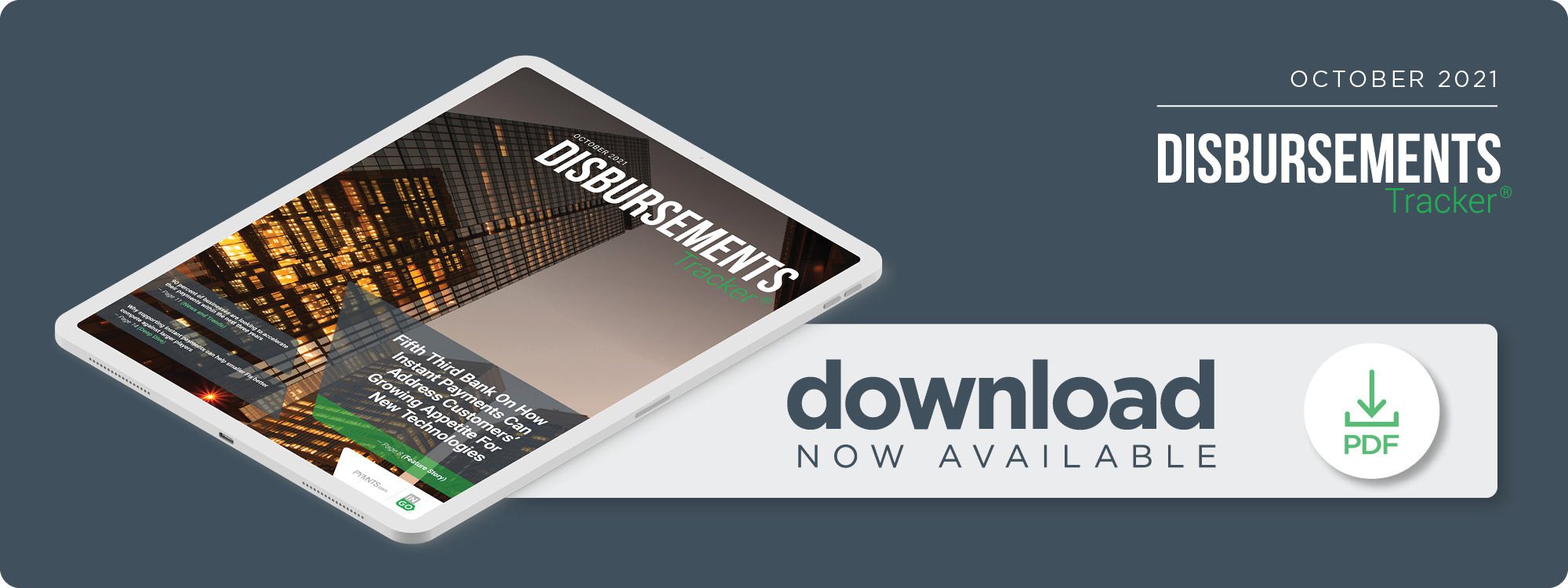Fifth Third Bank on How Instant Payments Can Address Customers’ Growing Appetite for New Technologies

Businesses angling for a competitive advantage are clamoring for instant payment options for everything from managing payroll to paying vendors. In the Disbursements Tracker, Fifth Third Bank’s Bridgit Chayt discusses how instant payments keep businesses on the cutting edge of innovation and allow them to share the speed with their customers.
Digital banking is the new normal, with 65% of Americans using some form of online banking so far this year.
While many bank customers still prefer in-person interactions for complex transactions, such as applying for loans or opening new accounts, smaller, everyday interactions, including deposits, withdrawals and payments, are quickly shifting to digital channels. This digital migration is allowing bank customers to spend as little time as possible interacting with their chosen financial institutions (FIs).
Accelerating these transactions has thus become a key priority for FIs, especially when it comes to business customers that have clients of their own. One FI looking to improve its faster payment options in response to overwhelming customer demand is 1,154-branch-strong Fifth Third Bank.
“Appetites for faster payments are growing, as is the menu of options to satisfy that appetite,” said Fifth Third Bank Senior Vice President and Head of Wholesale Payments Bridgit Chayt. “Payment facilitation is much more than moving money from point A to point B. It has the power of positively impacting our customers’ customer.”
Chayt spoke to PYMNTS about what customers expect from their banks when it comes to payments and the use cases that Fifth Third is enabling through faster payment options.
What Customers Expect From Their Banks
Business customers have various reasons for demanding faster and even instant payments, Chayt said. Having money in the right place at the right time means fewer delays in payroll, vendor payments and a host of other functions, including the environmental concerns associated with the excessive use of paper payments, such as checks.
“Over the last 18 months, commercial clients’ payment preferences swiftly moved from desire to demand,” Chayt explained.
“The multitude of advantages associated with automated payables and receivables provide relief against macro environs of labor shortages, supply chain risks and environmental sustainability commitments.”
Business clients also needed faster payments to meet their customers’ demands. Individuals have grown accustomed to the instant satisfaction that apps such as Venmo and Apple Pay offer, and they demand it from all businesses with which they interact. These businesses, in turn, demand instant payment options from their banks to pass on this experience to customers.
“Driving the appetite [for faster payments] is … the retention of our customers’ customers,” Chayt said. “Whether using our suite of real-time payment options or embedding payments into their client-facing software, customers are increasingly interested in crafting a payments strategy to leverage speed for additional benefits.”
Meeting such exacting demands can be a tall order for banks, but those that manage to successfully implement instant payments can reap a host of benefits.
The Benefits of Providing Faster Payments
Enabling faster payments can augment countless use cases, Chayt explained. Not only are Fifth Third’s customers leveraging instant payments to support payroll and emergency funds but also to access those funds at any time without needing to visit branches or make phone calls.
“Payroll use cases for emergency, gig economy and just-in-time payrolls are seeing strong adoption,” she said. “And payroll adoption is proving [to be] a catalyst to new use cases. Banking hours no longer apply, whether it’s [real-time payments] or request for payments, use cases for consumer payments in a variety of industries.”
Simply implementing instant payment options is not the end of the road, however. Businesses’ and consumers’ demands will continue to evolve, and banks must stay agile to satisfy new demands as they arise.
“As availability for instant payments becomes more prevalent, we anticipate both volume and applicability in everyday business operations to be on the rise,” Chayt said. “Many segments will continue to push the envelope. We see innovation opportunities in title and escrow, healthcare and technology providers in the forefront.”
Providing instant payments for these use cases will be critical to maintaining a competitive edge in the lightning-fast digital banking environment. Businesses and their customers are more than willing to switch FIs for access to superior services, meaning banks must stay on the cutting edge or risk being left behind.

